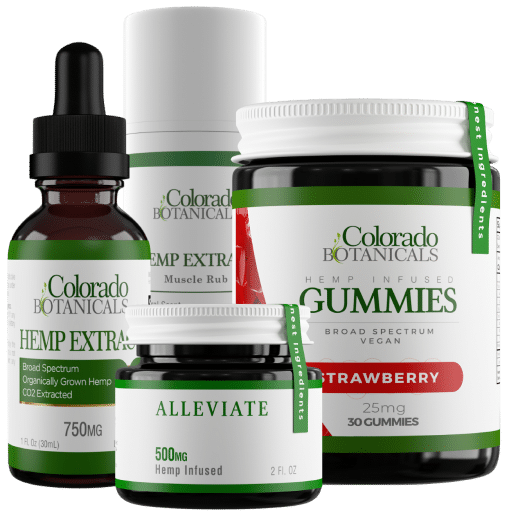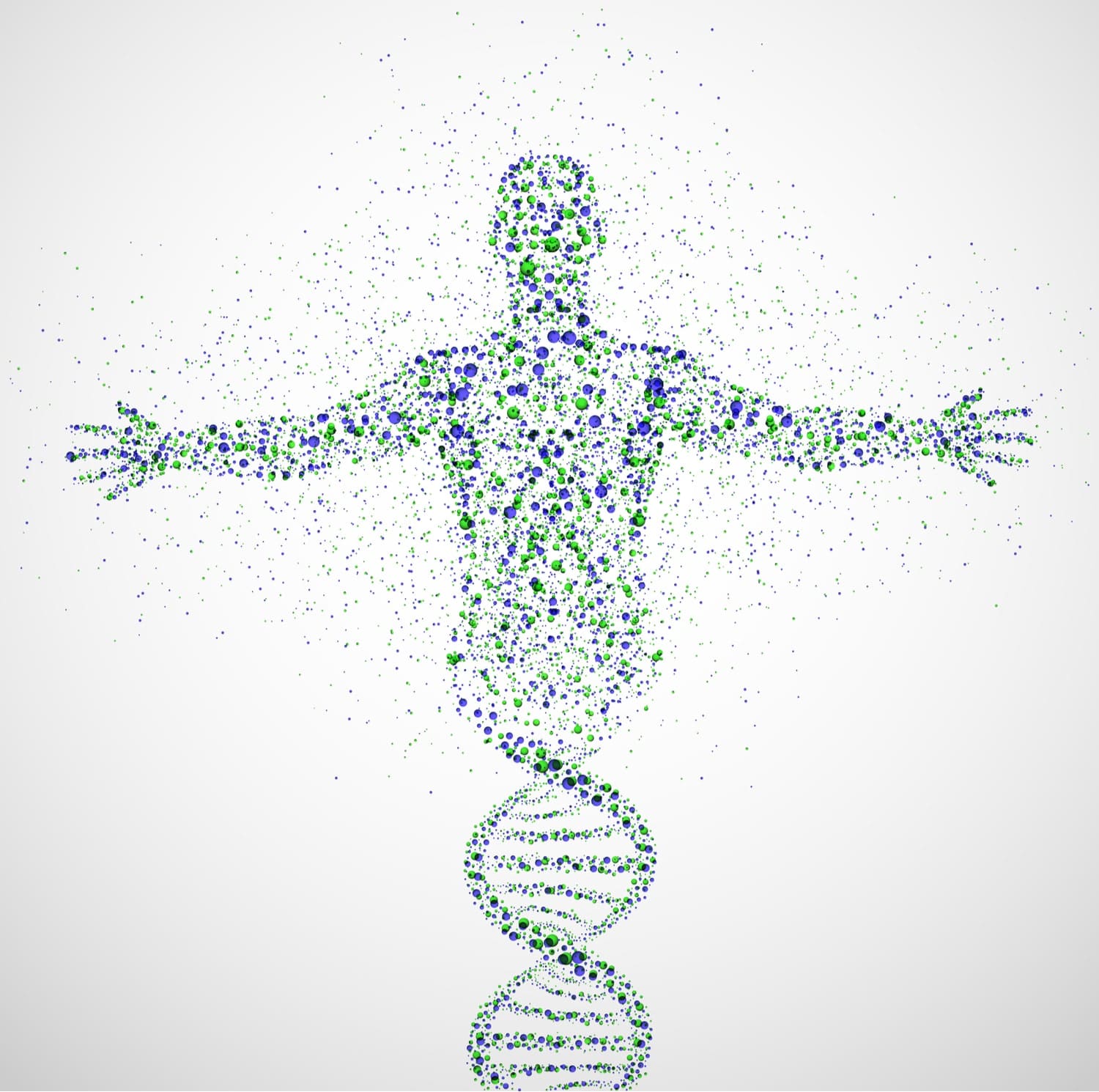With cannabis plants containing over 113 known cannabinoids, the list of these critical cannabis compounds continues to grow. Now, thanks to cannabis law reforms in many states (and countries), research can finally catch up with the medical claims that date back literally thousands of years.
Of course, by now, we all know about THC and CBD. The two cannabinoids are effectively household names, even among non-cannabis users. But that still leaves at least 111 other related compounds. Ones like CBG, CBC, and CBN are slowly entering the hemp-derived supplement market.
So, where does CBDA factor into this? What – if any – potential benefits does CBDA offer? Where does it fit among the other 100+ cannabinoids in mature and growing cannabis plants? We’ll cover these and more as we explore the question, “what is CBDA?”
What are Cannabinoids?
Cannabinoids like CBDA are compounds unique to the cannabis Sativa L. plant, which is the scientific term for what we call “hemp” (cannabis with less than 0.3% THC) and “marijuana” (exceeding 0.3% THC). But there are plenty of other substances inside the plant, such as terpenes and flavonoids. So what makes cannabinoids unique?
According to the Australia-based Alchohol and Drug Foundation, “cannabinoid” refers to any substance [internal or external] that interacts with or impacts our body’s specialized endocannabinoid receptors. This includes those found in cannabis (phytocannabinoids) and our internal ones (endocannabinoids) produced by our bodies. We’ll cover these shortly.
What is CBDA?
In short, CBDA is the chemical precursor to CBD. The “A” stands for “acid,” which applies to all major cannabinoid precursor compounds. As a raw cannabis plant matures, cannabinoids appear in their acidic forms.
So what’s the difference between CBDA and CBD? More importantly, why does it matter? This is where things start to heat up – literally and figuratively.
What is Decarboxylation?
Ever wonder why we smoke or vape cannabis or why we need to heat dry herb to a nice golden brown before extracting it into oil or edibles? To understand this, let’s revisit the “A.” All cannabinoids have chemical structures that include a “carboxyl group,” consisting of one carbon, one hydrogen, and two oxygen atoms (COOH).
When we expose cannabis plant material to temperatures of at least 230 to 250oF (110 to 120oC), the heat removes these carboxyl groups from each cannabinoid’s molecular structure. In doing so, the cannabinoid goes from CBDA to CBD, providing the effects and benefits we’re familiar with.
The same applies to CBD’s intoxicating counterpart. THCA is completely inert and will only cause psychotropic effects once decarboxylated into THC.
Decarboxylation also happens slowly. Exposure to light and oxygen can passively activate a small number of the raw cannabis flower’s compounds.
How is CBDA Made?
Cannabidiolic acid is made the same way all other cannabinoids develop in a raw cannabis plant. However, “made” may not be the best word. Instead, CBDA develops gradually like most other cannabinoids and plant enzymes.
All cannabinoids start as CBGA (cannabigerolic acid), also known as the “stem cell cannabinoid.” As the raw cannabis plant matures, CBGA loses its dominance and branches out into THCA, CBDA, and more. Once fully grown, CBGA is almost non-existent in a mature cannabis plant, leaving THCA and CBDA as the dominant cannabinoids.
As for commercial CBDA products, the extraction process is identical to conventional CBD oil. However, CBDA extraction involves raw cannabis flowers. Once removed, CBDA can be infused into a carrier oil for consumption.
How Does CBDA Work in the Body?
Because cannabidiolic acid is the precursor to CBD, it’s no surprise that their mechanism of action is similar. Like CBD, CBDA doesn’t directly bind to either the CB1 or CB2 cannabinoid receptors. Instead, it acts through other receptor pathways, altering the CB1 and CB2 groups and changing the way we react to endocannabinoids and phytocannabinoids.
According to a 2020 publication in the journal Molecules, CBDA interacts with the 5-HT1A serotonin receptors. Despite being a single receptor type, 5-HT1A pathways control many different functions, including mood, aggression, appetite, memory, sleep, and nausea. It’s no surprise that CBD – despite having no direct connection with the body’s endocannabinoid system (ECS) receptors – still provides therapeutic effects comparable to other cannabinoids.
What are the Benefits of CBDA?
The potential health benefits of CBDA are largely unknown. Research suggests similar effects to CBD. Given the difference boils down to its decarboxylated and acidic forms, it’s no surprise that there’s substantial overlap.
Without reliable clinical human trials or substantial scientific studies, CBDA received only a fraction of CBD’s spotlight. Still, according to some research, CBDA shows promise for various common issues and symptoms.
Inflammation
CBDA benefits aren’t fully understood, but its decarboxylated cousin has a growing body of research supporting its anti-inflammatory effects. So do CBDA’s extra carbon, oxygen, and hydrogen atoms help or hinder this potential therapeutic application?
One piece of research from 2008 in Drug Metabolism and Disposition indicates potential anti-inflammatory benefits. When the research team applied CBDA to cell cultures, they discovered it “selectively inhibited cyclooxygenase (COX)-2 activity.”
In plain English, COX-2 is an enzyme that helps develop pro-inflammatory compounds. Inhibiting this process appeared to reduce inflammatory responses in the tested cells, potentially giving CBDA the ability to curb inflammation.
Another notable discovery was that CBDA showed better anti-inflammatory benefits than those observed with THCA – the precursor to THC.
Breast Cancer
Breast cancer is a substantial health concern for all women. Although conventional treatments are often successful, cannabinoid medicine has a tendency to surprise us when we least expect it. Coincidentally, the researchers responsible for the 2008 study above kept investigating CBDA into 2017.
The 2017 study published in the Journal of Natural Medicine focused on the potential benefits of CBDA against breast cancer cells. The paper addresses CBDA’s inhibition of COX-2, theorizing that cannabidiolic acid can work through these same pathways and mechanisms to inhibit the development of highly aggressive breast cancer cells.
Nausea
Both CBD and THC have a reputation in the supplement community. These cannabinoids may offer potent anti-nausea effects. So far, research suggests that CBDA could follow the same pattern and perhaps even outdo its rivals.
A 2013 study in the British Journal of Pharmacology examined CBDA’s effects on nausea and vomiting in rodent subjects. Specifically, they focused on toxin or motion-induced experiences in shrews (vomiting) and rats (nausea).
The researchers used CBDA to enhance the activation of its pathway, the 5-HT1A receptor. As we mentioned earlier, this receptor modulates many functions, including nausea.
It should come as no surprise that when CBDA bound to the 5-HT1A receptors in the animals, it reduced or prevented episodes of vomiting in the shrews. The rats also displayed less nausea-related behaviors.
In their conclusion, the authors boldly mention that not only should CBDA be seriously explored as an anti-emetic, but that it may also be more effective than CBD or THC.
Can CBDA Block COVID-19 Variants?
In January of 2022, a sensationalized story made headlines for weeks, with titles implying that CBD can help prepare the immune system for a more robust defense against COVID-19. The stories came on the heels of a small lab study published in bioRxiv, which is yet to undergo peer review.
A more detailed 2020 study in the Journal of Natural Products looked at several cannabinoids and noticed CBDA and CBGA worked best at blocking COVID-19 from entering healthy cells. The research team also mentions that CBDA is slightly more bioavailable than CBD, but it would still require a substantial dose to be effective (assuming it works in human clinical trials).
If you want to learn more about the CBDA – COVID connection, check out our post here.
Regardless, any potential CBDA benefits against COVID-19 are highly speculative and preliminary. Cannabinoid medicine is no substitute for modern preventative or therapeutic measures against the novel coronavirus.
CBDA vs. CBD: What are their Differences and Similarities?
CBDA and CBD are virtually identical in most respects. However, it’s impossible for two cannabinoids to be carbon copies of each other. Let’s look at some similarities and differences in our CBDA vs. CBD showdown.
CBDA and CBD Similarities
One major similarity between cannabidiolic acid and cannabidiol is its therapeutic profile. More research is definitely needed, but it so far appears that the two compounds could have similar reported medical benefits.
Another crucial similarity is that – like almost all cannabinoids – CBDA has no intoxicating effects (nor does THCA, for that matter).
A third similarity is that both interact with the same serotonin pathways in the 5-HT1A receptors.
CBDA and CBD Differences
Perhaps the most glaring difference between CBDA and CBD is its molecular structure. CBDA still has its carboxyl group, while CBD doesn’t.
On a related note, another difference is that CBD can only exist after decarboxylation through high heat or exposure to the elements.
A third way the two diverge relates to consumption methods. Because CBDA can’t be exposed to high heat without becoming CBD, individuals who smoke or vape are out of luck. Although CBDA will still work in a tincture or topical, inhalation has nearly instant effects. Removing inhalation from the picture is limiting for people who need quick relief.
Is CBDA Better Than CBD?
CBDA isn’t better or worse than CBD. Both potentially offer medical benefits. Ultimately, it’s about what best fits your needs.
How to Use CBDA
You use CBDA in the same way you would CBD or any other cannabinoid – with one exception. Cannabinoids lose their acidic forms when heated, meaning you can’t smoke or vape CBDA. If you try, the CBDA will decarboxylate. However, there are other consumption methods.
Oral
Like CBD, CBDA can be infused into other substances. This allows us to add it into tinctures, capsules, gummies, foods, and drinks (i.e., raw cannabis juice)
Keep in mind, however, that bioavailability is the lowest with ingested cannabinoids. It’s also slow to take effect but outlasts any other methods.
Topical
Topical creams are also an excellent option for CBDA consumers. They’re typically known to take effect quickly. However, the benefits are focal. If you need a more generalized effect, consider a tincture or other oral option.
Can You Take CBDA and CBD Together?
Yes, you can take CBDA and CBD together. Adding cannabidiolic acid to your daily dose of cannabinoids will be beneficial, adding to the synergistic “entourage effect.” Their therapeutic similarities with CBD will also support and enhance the activated cannabinoid’s benefits.
What’s the Best Way to Take CBDA?
The best way to take CBDA depends on your individual needs. Assuming its reported benefits are true, your ideal approach should be based on the relief you seek.
For instance, if you hope to treat nausea or improve sleep, a tincture, capsule, or edible would be the appropriate option.
On the other hand, fast, focal, targeted relief for aching joints or sore spots generally calls for a topical approach.
Is CBDA Legal?
Yes, CBDA is legal in all 50 states. Like CBD supplements, CBDA is sourced from the industrial hemp variety of cannabis, which legally must contain less than 0.3% THC.
Where to Buy CBDA?
CBDA products aren’t widely available. You might find some at obscure online vendors, but with such a short tenure, it’s hard to expect the same quality and potency as a broad or full-spectrum CBD tincture.
However, innovation is critical for everyone’s health options. At Colorado Botanicals, we’re working hard to research, craft, and perfect a safe, effective CBDA extract option within the next three months.
Final Thoughts on Cannabidiolic Acid (CBDA)
It’s always exciting to hear about a potential cannabis breakthrough on the heels of popular CBD products. CBDA appears to show some promise to treat inflammation, fight breast cancer, and curb nausea.
CBDA studies are still few and far between. But with further research, the implications to human health could be groundbreaking.
Meanwhile, it’s important not to fall for online hype. Only reliable studies will give us a full picture about the health benefits of CBDA.
Sources
Bolognini, D., Rock, E., Cluny, N., Cascio, M., Limebeer, C., Duncan, M., Stott, C., Javid, F., Parker, L., & Pertwee, R. (2013). Cannabidiolic acid prevents vomiting inSuncus murinusand nausea-induced behaviour in rats by enhancing 5-HT1Areceptor activation. British Journal of Pharmacology, 168(6), 1456–1470. https://doi.org/10.1111/bph.12043
Cannabinoids – Alcohol and Drug Foundation. (2021). Alcohol and Drug Foundation. Retrieved February 13, 2022, from https://adf.org.au/drug-facts/cannabinoids/
Fernandes, M. F., Chan, J. Z., Hung, C. C. J., Tomczewski, M. V., & Duncan, R. E. (2022). Effect of cannabidiol on apoptosis and cellular interferon and interferon-stimulated gene responses to the SARS-CoV-2 genes ORF8, ORF10 and M protein. bioRxiv. https://doi.org/10.1101/2022.01.11.475901
Formato M, Crescente G, Scognamiglio M, Fiorentino A, Pecoraro MT, Piccolella S, Catauro M, Pacifico S. (‒)-Cannabidiolic Acid, a Still Overlooked Bioactive Compound: An Introductory Review and Preliminary Research. Molecules. 2020; 25(11):2638. https://doi.org/10.3390/molecules25112638
Takeda, S., Himeno, T., Kakizoe, K., Okazaki, H., Okada, T., Watanabe, K., & Aramaki, H. (2016). Cannabidiolic acid-mediated selective down-regulation of c-fos in highly aggressive breast cancer MDA-MB-231 cells: possible involvement of its down-regulation in the abrogation of aggressiveness. Journal of Natural Medicines, 71(1), 286–291. https://doi.org/10.1007/s11418-016-1030-0
Takeda, S., Misawa, K., Yamamoto, I., & Watanabe, K. (2008). Cannabidiolic Acid as a Selective Cyclooxygenase-2 Inhibitory Component in Cannabis. Drug Metabolism and Disposition, 36(9), 1917–1921. https://doi.org/10.1124/dmd.108.020909
van Breemen, R. B., Muchiri, R. N., Bates, T. A., Weinstein, J. B., Leier, H. C., Farley, S., & Tafesse, F. G. (2022). Cannabinoids Block Cellular Entry of SARS-CoV-2 and the Emerging Variants. Journal of Natural Products, 85(1), 176–184. https://doi.org/10.1021/acs.jnatprod.1c00946









